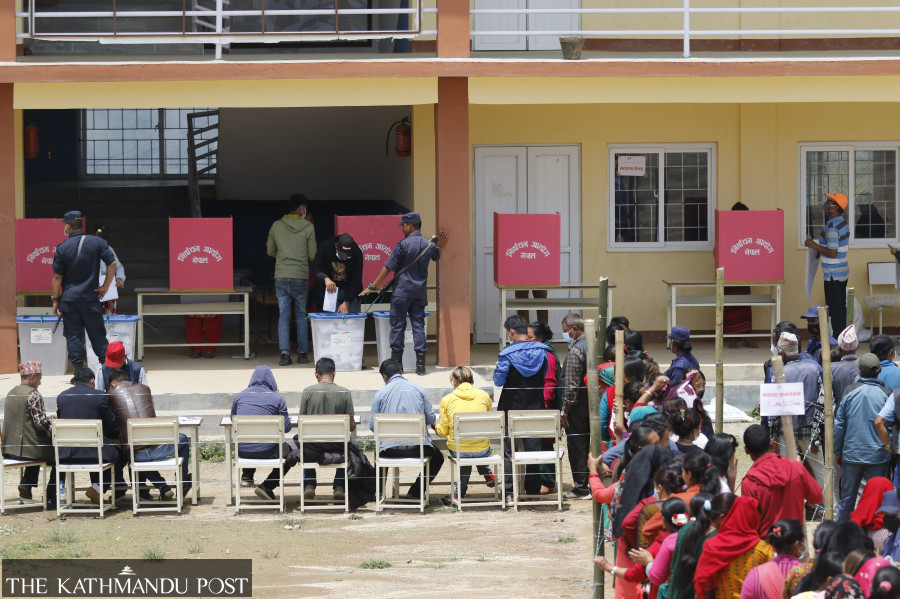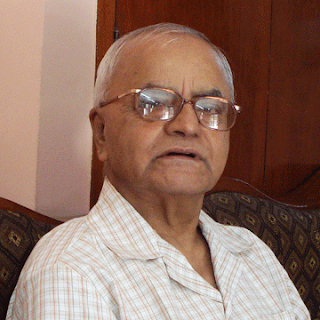Columns
Messages from Ilam and Bajhang
The tropes used in politics are temporary, and a leader’s charisma cannot inspire voters for long.
Lok Raj Baral
The by-elections held in Ilam-2 and Bajhang-1 have indicated the continued dominance of the two major parties, Nepali Congress (NC) and CPN-UML. At the same time, the setbacks suffered by the Rastriya Swatantra Party (RSP), the Unified Samajwadi Party, along with the independents who fought the election in Ilam-2, demonstrate that they might be in the process of attrition, if not immediate extinction. Further, the UML has shown its undisturbed presence in the country's hills.
Vacuous slogans
The meteoric rise of the RSP during the last elections, 20 parliamentary seats in one go, was read as people’s search for an alternative to the old parties that have failed to deliver. The two old parties have now sidelined the CPN (Maoist Centre), which too had come with a big-bang approach by catapulting itself into the first position in the 2008 Constituent Assembly election. It validated the hypothesis that parties soon weather away when they have vacuous slogans and rhetoric without established grassroots.
The same Maoist leaders who became game changers in the Nepali political landscape are now increasingly being swept away. The tropes used in politics are temporary, and the charisma of a leader cannot go on inspiring the voters. This time, in the Ilam by-election, the Maoist party could not present its candidate and instead preferred to be a coat-tail of the CPN-UML despite having no formal alliance. Their tactic was to save their face by opting out of the race. However, their poor showing in Bajhang proves that the party is thinning out each passing day.
Identity politics
Identity politics in Nepal hasn’t succeeded as most identity lobbies are either absorbed in major parties or are weak in scoring their agendas. Nevertheless, the vote gained in the name of identity is something to ponder over for the leaders of the two major parties. Promises made by the Maoists during the 10-year insurgency have been nullified by their own actions while in government and outside. Even the constitutional arrangements made for more inclusive democracy are ignored so much that now all parties seem to be sticking to the old patterns of governance where only lip service is paid for participation and empowerment. All parties look like birds of the same feather on the issue of inclusion and empowerment. So the deprived sections of society are increasingly becoming truculent, which is vindicated in media, demonstrations, and sit-ins.
However, identity politics isn’t strong enough to influence the power elites as was seen during the finalisation of the 2015 Constitution of Nepal. The bullish behaviour displayed by the proponents of identity-based federal structure soon dissipated owing to the major parties’ success in absorbing these leaders in their parties. Thus, Nepali politics has not yet come under the pressure of sustained movement for identity politics. The UML and the NC rejected the demand for an identity-based province, with the Maoist Centre oscillating between choosing Koshi or an ethnic name for the erstwhile Province One. The acceptance of the name of Koshi Pradesh instead of an ethnic identity by a two-thirds majority seems to show the dominance of the two major parties.
The majority of the people Ilam belong to indigenous/ethnic groups such as Rai (20.79 percent), Limbu (16.10 percent), Magar (5.21 percent), Newar (3.76 percent), Gurung (3.04 percent) and Dalit ( 3.50percent). Only Bahun (16.10 percent) and Chhetri (13.90 percent) belong to the “high caste” groups in the social hierarchy. Yet, despite the size of the predominant ethnic population, the identity movement is generally weak. It is a national phenomenon as no movement but in the Madhesh-Tarai have ever developed into a decisive stage for putting pressure on the dominant caste-based parties and their leaders.
Ideological vacuum
Ideas, leadership and organisation are the major ingredients for any party to sustain. Some new parties formed under the banners of different nomenclatures and symbols, lack these viable ingredients Even the condition of the Dalits is precarious as they are simply the bystanders of the great political game being played around them. Thus, individuals fighting elections on populism and heroism may not hold on for long. How the RSP, under Ravi Lamichhne, would wade through the emotive public behaviour and organisational deficit needs to be watched. Indications are not positive after Lamichhane decided to join the Pushpa Kamal Dahal-led coalition government as deputy prime minister and home affair minister.
There has been a gap between the RSP’s decision to join the government and the perceptions of people who want to see Lamichhane clean and decisive. Under the existing circumstances, he can be neither. The claim that he is avoiding the case of his alleged involvement in the embezzlement of cooperatives’ share in Pokhara and elsewhere would not be washed unless he prepares the ground for an independent investigation into the matter. Since he is the home minister, it is assumed that he may abuse his office to influence such investigations. The drubbings in by-elections have further weakened his bargaining position vis-à-vis the other coalition partners, especially the UML and the Maoists.
Performative legacy
Elections alone have no significance except to increase the numbers in Parliament. It is particularly so because Parliament has almost become a platform to show that all so-called elected governments are legitimate and democratic. For political leaders, an election is the only yardstick to establish such legitimacy regardless of other components such as what Samuel P. Huntington calls “performance legitimacy” based on delivery capability. If the UML or the NC adds two more seats, their numerical prospect would be improved during the making and breaking of governments, a regular phenomenon in Nepali politics.
The game of changing governments is now spread out in provinces. Yet, elections provide some clues to understanding political directions or pointers. The by-election results have such pointers for the upcoming Nepali party politics. Since the “creation of parties has been a continuous process”, all parties except a few are perennially in the churning. As the once-monolithic Madhesi parties have shown, no one can predict their survival or attrition. The process of integration and disintegration has been evident since their formation during the Madhes movement.




 8.12°C Kathmandu
8.12°C Kathmandu















